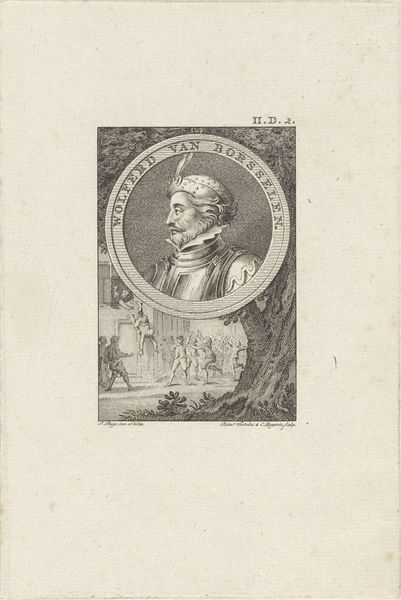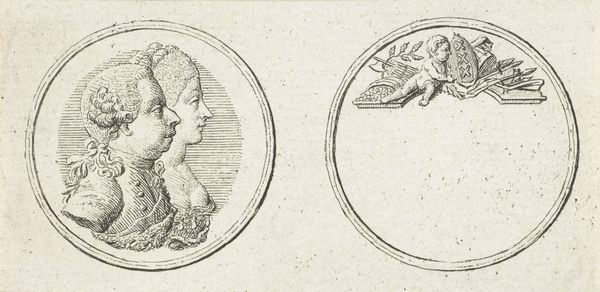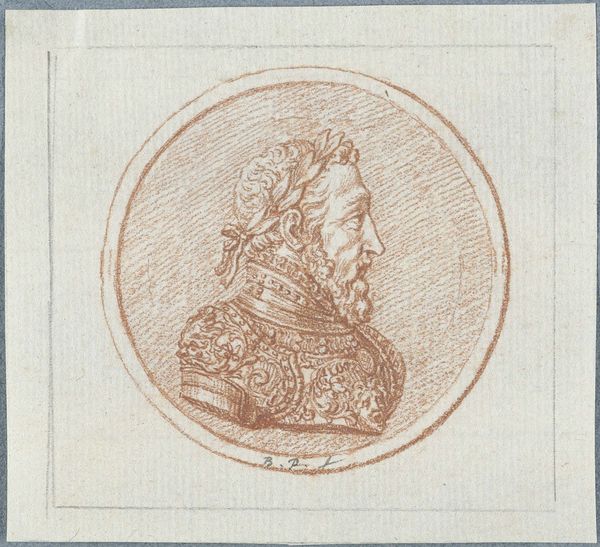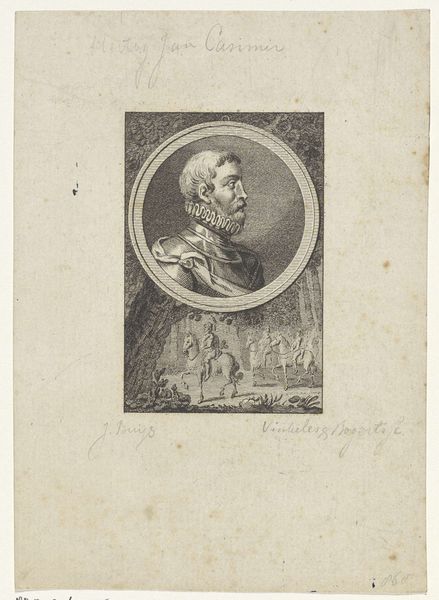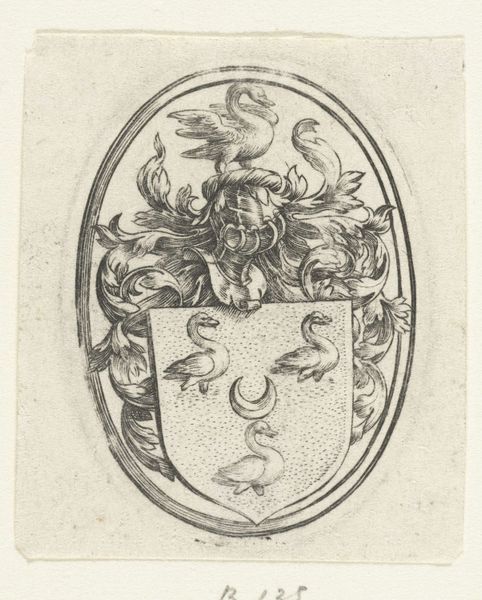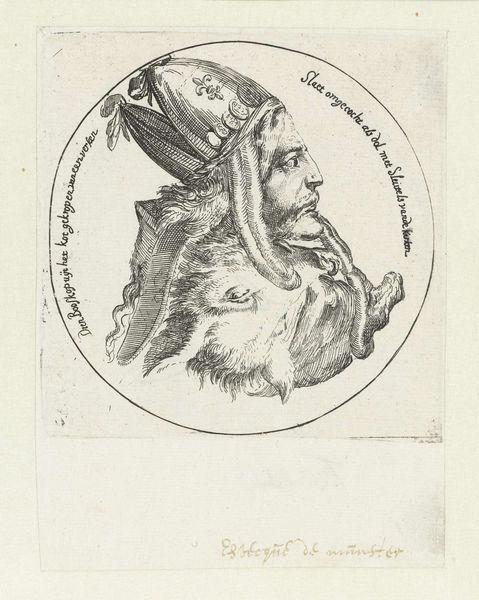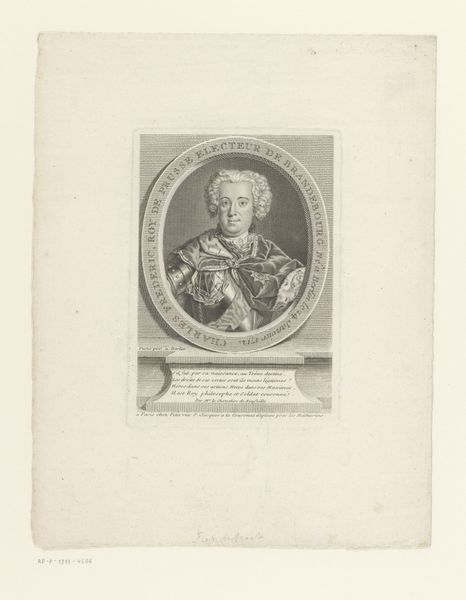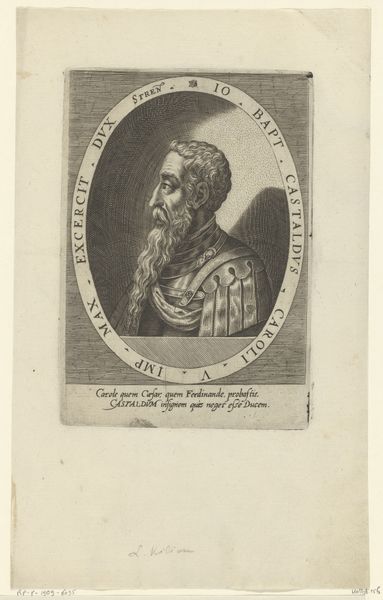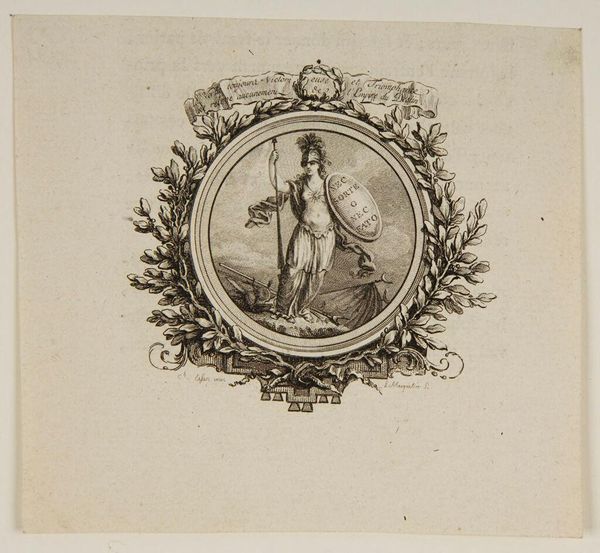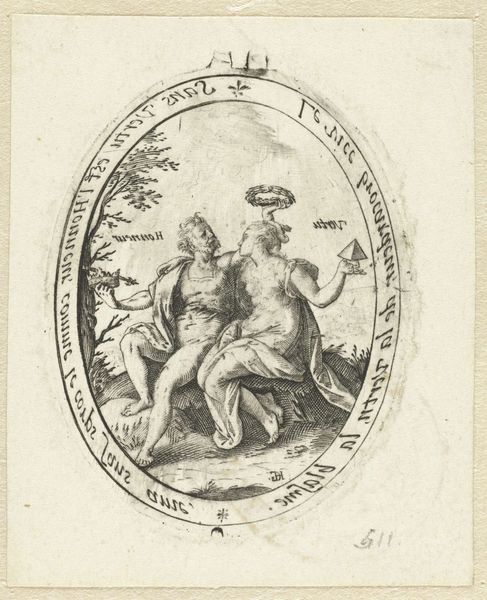
print, engraving
#
portrait
#
baroque
# print
#
pen sketch
#
caricature
#
old engraving style
#
engraving
Dimensions: height 150 mm, width 115 mm
Copyright: Rijks Museum: Open Domain
Curator: Here at the Rijksmuseum, we have a rather biting satirical print from 1672 by Romeyn de Hooghe. It’s called "Portraits of the De Witt Brothers as a Fox and a Wolf." What's your first take? Editor: Well, it’s definitely direct! The stark contrast of the precise lines in the engravings gives it an immediate sense of urgency. I see the faces of two men morphed with animals, the fox and the wolf. The piece is dripping with negative associations and suspicion. Curator: That urgency comes from the turbulent political climate. De Hooghe was a master propagandist. The De Witt brothers, Johan and Cornelis, were powerful figures in the Dutch Republic, but by 1672, public opinion had turned against them. This print played into that sentiment, part of a broader campaign of vilification. Editor: So the fox and the wolf, those weren't flattering comparisons. Traditionally, the fox symbolizes cunning and deception, while the wolf represents ruthlessness and greed. Combining these creates a potent image of untrustworthiness. Look at the medallion around the wolf’s neck too—it looks almost like a trap. Curator: Exactly. De Hooghe uses potent visual shorthand to influence public opinion. What’s fascinating is how quickly these animalistic representations took hold in the popular imagination. The brothers were brutally murdered that same year, fueled, in part, by this kind of imagery. Prints like this one highlight the power of images in shaping collective memory and driving political action. Editor: It really highlights the dangerous potency of symbols when emotions run high. Thinking about the portraits morphed into animals – that bestial transformation reflects the way people perceived these politicians: no longer rational humans but threats to society. A terrifying testament to the era. Curator: A disturbing, but undeniably powerful example of art functioning as a weapon in the theater of politics. Editor: Absolutely. It makes you think about how imagery shapes our understanding of leaders even today.
Comments
No comments
Be the first to comment and join the conversation on the ultimate creative platform.
